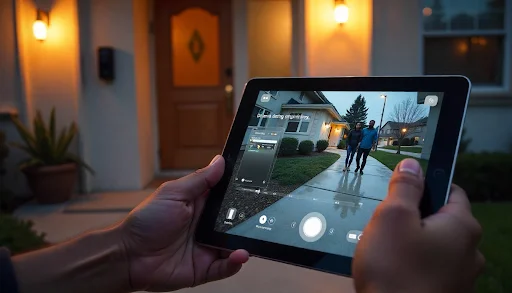The smart home market is no longer a futuristic concept—it’s an everyday reality. From intelligent lighting and climate control to AI-powered assistants, consumers are seeking ecosystems that bring convenience, energy efficiency, and security. The real question is: will Apple take the lead in driving the next wave of smart home innovation?
With Apple’s strong track record in creating seamless ecosystems and user-first design, the answer may be closer than we think. Let’s explore Apple’s current position and future possibilities in the smart home revolution.
1. Apple’s Existing Smart Home Footprint
Apple has already laid a foundation in the smart home space through:
- HomeKit: Apple’s software framework that allows users to control smart home devices using iPhone, iPad, Apple Watch, or Siri.
- HomePod and HomePod Mini: These smart speakers act as hubs, enabling voice-controlled management of devices.
- Apple TV: A hub that integrates entertainment with smart home functionality.
This ecosystem ensures Apple isn’t starting from scratch—it’s scaling from a platform that already delivers trust and simplicity.
2. The Competitive Landscape
The smart home industry is dominated by big names like Google (Nest), Amazon (Alexa), and Samsung (SmartThings). Each player brings unique advantages:
- Amazon: Strong voice AI with Alexa and vast third-party integrations.
- Google: AI-driven personalization and Nest’s extensive hardware line.
- Samsung: A Wide range of connected appliances under SmartThings.
Apple differentiates itself by prioritizing privacy, security, and seamless integration. For many consumers, these values align perfectly with their expectations of premium smart home solutions.
3. How Privacy Could Be Apple’s Trump Card
With growing concerns around data usage, Apple’s “privacy-first” philosophy could become the biggest driver of consumer trust in smart homes. While competitors often monetize data for advertising, Apple markets privacy as a core product feature.
Future innovations in smart home monitoring, facial recognition, or biometric security could position Apple as the most trusted provider in the space.
4. The Role of Health and Wellness in Smart Homes
Health is quickly becoming a cornerstone of the smart home ecosystem. Apple is uniquely positioned to merge healthcare with connected living through devices like the Apple Watch.
For instance:
- Sleep tracking and environment control (adjusting room temperature, lighting, or air quality).
- Fall detection and emergency response integrated with smart home alarms.
- Chronic condition monitoring, connecting data from the Apple Watch to home-based medical devices.
This synergy highlights the increasing overlap between Apple Watch and traditional medical devices, paving the way for homes that actively promote health and longevity.
5. What the Future Could Look Like
If Apple chooses to scale its smart home innovation, here’s what we can expect:
- Unified AI Assistant: A more advanced Siri, capable of predictive learning and context-aware automation.
- Apple-designed Hardware: Beyond speakers, possibly smart displays, security systems, or connected appliances.
- Seamless Home-to-Car Connectivity: Integration with Apple CarPlay and future Apple Car projects.
- Cross-Device Automation: Actions triggered across iPhone, Mac, and smart home devices simultaneously.
Apple’s advantage lies in ecosystem consistency—every device and service works in harmony, unlike the fragmented experiences often found in competitors’ ecosystems.
6. Staying Updated on Apple’s Moves
Apple’s strategy in smart home innovation is often revealed gradually, with small but impactful updates. Industry observers and users who want to stay informed should regularly check the latest Apple news updates from Apfel Patient, as this is where early signals of Apple’s smart home roadmap typically emerge.
From patent filings to subtle software enhancements, these updates provide clues into the tech giant’s long-term vision.
7. Challenges Apple Must Overcome
While Apple is well-positioned, several challenges remain:
- High Price Point: Apple’s products are premium, limiting accessibility.
- Limited Device Variety: Compared to Amazon and Google, Apple currently offers fewer dedicated smart home devices.
- Third-Party Integration: Developers sometimes find HomeKit less flexible than competing platforms.
The launch of the Matter standard (a universal protocol for smart home devices) could help address compatibility issues, potentially giving Apple an even stronger edge.
Conclusion
Apple has all the right building blocks—ecosystem, privacy focus, hardware expertise, and healthcare integration—to lead the next wave of smart home innovation. Whether through new product launches or deeper integration of existing technologies, Apple’s strategy seems poised to set the gold standard for connected living.
As consumer demand grows for homes that are not just smart but intuitive, secure, and health-focused, Apple may once again redefine what it means to live in the future.


